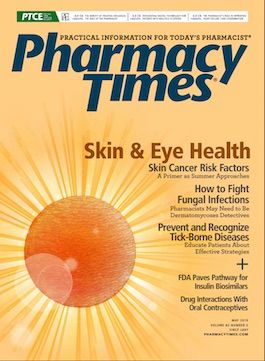Pharmacy Midlevels Are Around the Corner
Sign me up for a services contract with a better patient outcomes bonus payment.
The patient-centered medical home model was first envisioned by the American Academy of Pediatrics in 1967.
Yes, you read that right. The foundation of the coordination and accountable care movements, wherein the primary care provider quarterbacks a care team and uses data to make sure everyone caring for the patient is on the same page and closing care gaps, was conceived more than half a century ago.
Why did establishing this model in health care take so long? There has been a lack of a business model to support it.
Although seeming correct, a patient-centered medical home was not that economical until the Affordable Care Act ushered in payment reform and self-insured employers launched a parallel movement to get more out of their health care purchases.
Prior to these new patient outcomes—based models of payment, expending additional time and energy to establish this type of health care model simply did not make sense.
THE POTENTIAL OF PATIENT-CENTERED MEDICAL HOME AND PHARMACEUTICAL CARE
Imagine a system where you can go to your primary care provider and they know what is going on with all your specialists, work with your home health and other ancillary providers, contact you when you are due for a test, and generally care for you. Similarly, imagine what the care of your sick relative would look like if the pharmacist were doing the same. Just as in primary care, our predecessors envisioned such a model of care. Hepler and Strand called it pharmaceutical care before the turn of the century, then we called it medication therapy management (MTM) when Medicare launched Part D and then comprehensive medication management when call centers took over MTM. No doubt we will try more new names in the future without addressing the core problem, which is a lack of a business model for the majority of pharmacists to change their practice models.
CHANGE FOLLOWS PAYMENT
Most pharmacists are on salary, which is supported by dollars flowing to reimburse for a particular product. Community pharmacist salaries are directly tied to buying and selling drug products. Even health systems’ pharmacy departments are largely funded by 340B product reimbursement. Without these reimbursements, pharmacy divisions within health systems would be subjected to serious budget cuts. Practice change, public perception, and the way our care team members interact with us is a direct reflection of how a health care professional is paid. Sign me up for a services contract with a better patient outcomes bonus payment any day of the week; that is a sustainable system. Competing against online and mail-order robots, without any demand for services, will be a losing strategy.
BETWEEN A ROCK AND A HARD PLACE
Pharmacist salaries remain the highest fixed cost for a pharmacy business, whether small, medium, or chain. What if a pharmacist were not necessary? What if advanced-practice pharmacy technicians were as capable of right pill, right bottle, and basic counseling? Don’t believe it? There are plans being laid. With some of the largest pharmacy providers in the country now publicly acknowledging that product margins are getting thin, there is 1 of 2 ways to go: reducing labor costs and playing the low-cost game or changing community pharmacy to a labor model.
The first strategy involves competing on price and reducing costs, whether through central fill, other types of automation, or replacing the pharmacist with a person half the salary (or less). Who will train these advanced-practice technicians? Colleges of pharmacy are struggling to fill admissions seats.
The second strategy involves relying less on product margin and relying more on services. Do in the pharmacy what cannot be done in a call center and with the US Postal Service. In this model, the advanced pharmacy technician will exist to fill the medications, but with an attending—resident relationship, having the pharmacist who provides services in close proximity in a superior primary pharmacy care model. This strategy is good for pharmacy schools, good for care team members, and good for patients.
POSTLUDE
A big shout-out to Tiger Woods, who won his fifth Masters and 15th major golf tournament last month. In “Tiger Woods’ Drug Misadventure: Reckless or Honest Mistake?” for the July 2017 edition of Pharmacy Times®, I wrote about our responsibility as health care professionals to educate patients about the medications we provision to them and to not judge individuals struggling with pain management and/or at risk for potential substance abuse disorder. I have no doubt that Woods had a good support team that included family figures and a top-notch medical team. I can only hope that a pharmacist or 2 were alongside him during his amazing recovery. Good on you, Tiger. Congratulations.
Troy Trygstad, PharmD, PhD, MBA, is vice president of pharmacy programs for Community Care of North Carolina. He also serves on the board of the American Pharmacists Association Foundation and the Pharmacy Quality Alliance.

